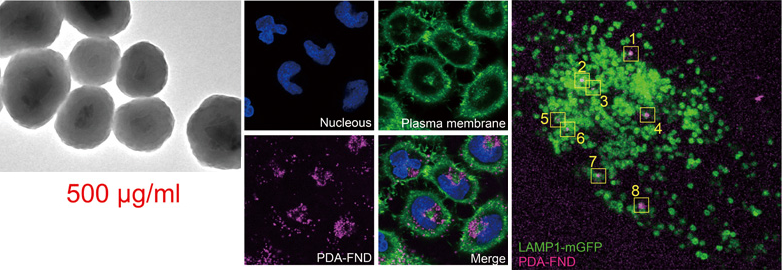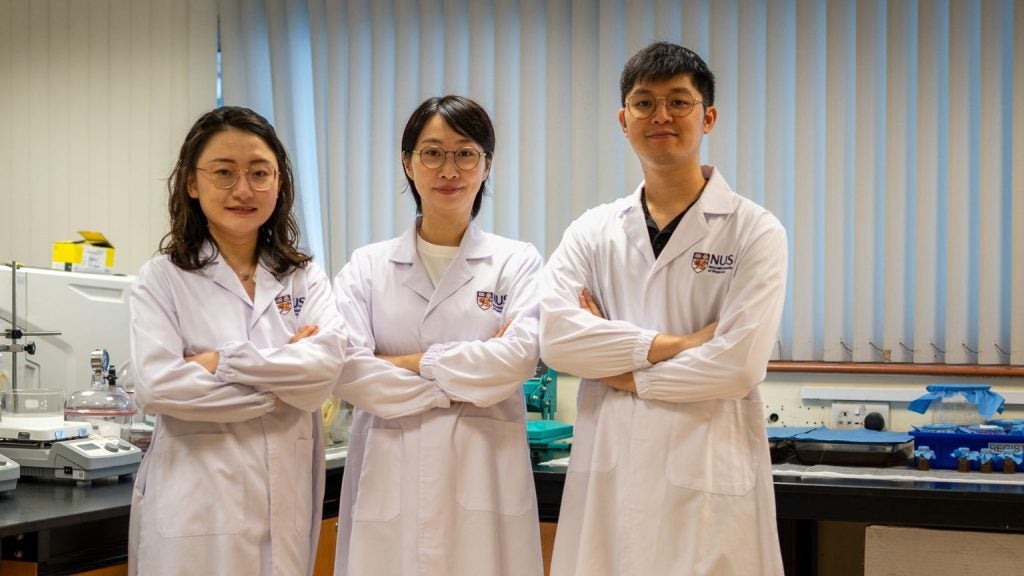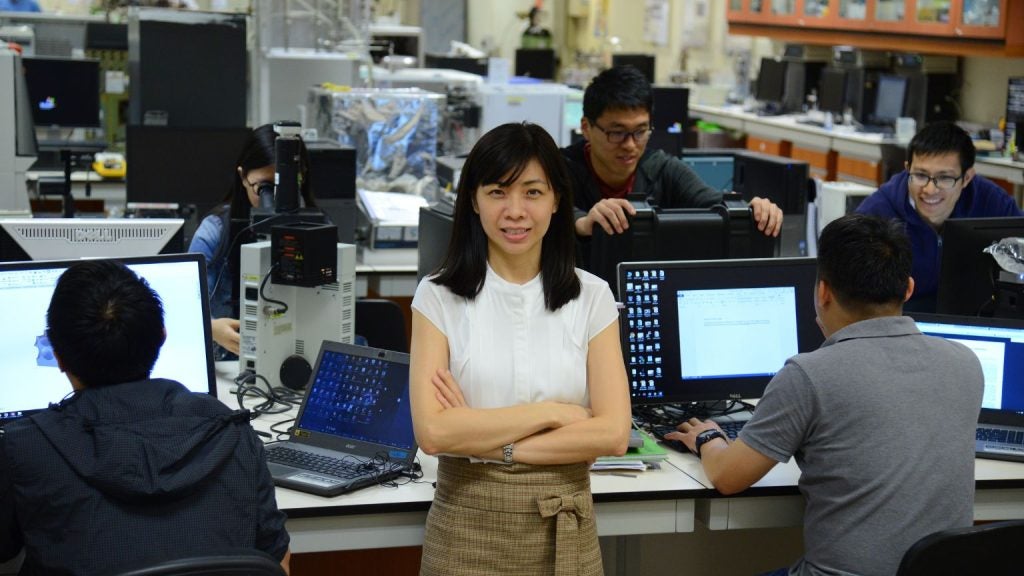
When it comes to diamonds, bigger isn't always better.
A joint research endeavour between three universities have found that nanoscale diamonds, when coated with a special polymer, can be used to measure thermal conductivity. This allows scientists to visualise the flow of heat and energy within living cells in real time, learning how they operate.
In collaboration with researchers from Osaka University and the University of Queensland, Dr James Kah Chen Yong of the NUS Department of Biomedical Engineering has co-authored a paper on these hybrid nanodiamond sensors.
The polymer-coated nanodiamonds provide for the first time a way to directly measure thermal conductivity within living cells. They could be used to investigate biological processes and shed light on metabolic disorders such as obesity.
Tiny light-driven sensors
The hybrid sensors are composed of a fluorescent nanodiamond (FND), coated with a polymer called polydopamine (PDA). Although both are well-studied materials, the combination of the two is new.
FNDs are widely used in biological sensing because of their fluorescent properties; the FND can absorb then re-emit light of a specific colour. This colour depends on the FND's temperature, allowing it to be used as a thermometer.
The PDA coating is pyrogenic; it produces heat when it absorbs light of a specific colour. The coating method is Dr Kah's main contribution to the research.
"I introduced the idea of using PDA to coat the FND as a heat source to [lead researcher Associate Professor Suzuki Madoka]," Dr Kah says. "I had developed the technique we used to coat the PDA on FND to form the FND-PDA."
Combining the two materials, the resulting FND-PDA hybrid is a tiny thermometer that can simultaneously heat its surroundings.

Unlocking the secrets of cells
How heat flows within a cell gives valuable information on biochemical reactions. The hybrid nanodiamond sensor provides a convenient way to measure thermal conductivity, which describes how easily heat can flow through an area.
What the hybrid sensor does is to heat the area around it, and sense its temperature. Measuring a low temperature means that heat is escaping the area faster - like a house with poor insulation in winter - whereas measuring a high temperature indicates that heat is staying within the area - like a house with good insulation.
The great advantage and novelty of the FND-PDA is that the thermometer and heater are combined into one unit, allowing for simple, direct real-time measurements. In addition, its small size allows for fine measurements, with a resolution of 200 nanometers - a hundred times smaller than the diameter of an average cell at around 20 micrometers. This allows scientists to investigate what truly goes on within a cell.
Potential applications in therapy
The small sensors have big opportunities to shine in the future.
"These FND-PDA hybrids can be used to probe thermal properties inside living cells, for which there have been no suitable existing techniques, until now," Dr Kah says. "This could be critical to a proper understanding of metabolic disorders, such as obesity."
The individual materials, FND and biodegradable PDA, are known to be safe for humans. If the hybrid FND-PDA sensors were also shown to be safe, they would be a new tool for important basic research. They could also see use in diagnostic tools and therapies for cancer, including photothermal therapy to kill cancer cells directly through heating.





